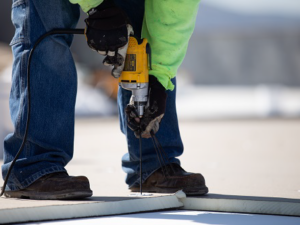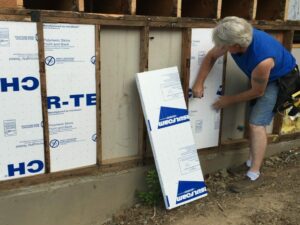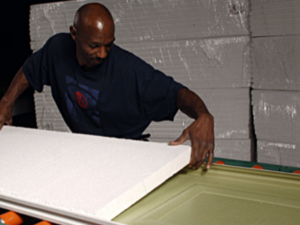Over the past few years, the construction industry has become accustomed to shipping delays and material shortages. While project delays have been seen as the result of skilled labor shortages, ongoing manufacturing and supply chain disruptions have also caused many staple construction materials, like residential insulation, to become scarce, which has further increased project timelines. Of those materials that are available, most have seen price increases. This trend, experts predict, will continue well into the year.
To keep construction timelines in pace with demand despite shortages and fluctuating building material costs, professionals can turn to expanded polystyrene (EPS) for their insulation needs. This versatile insulation material offers short lead times and the highest R-value per dollar of any rigid foam insulation. It can also be used in similar applications of extruded polystyrene (XPS) and polyiso insulations such as roofing and below-grade insulation. Contractors who have made the switch to EPS rigid foam have also discovered that while it resembles XPS foam its benefits extend beyond its short lead times and cost-efficient R-values.
EPS foam and short lead times, fewer hours, and less labor
Even before insulation began to feel the pressure of supply chain disruption, EPS foam was readily available. As shipping and manufacturing delays become the new normal for most insulation materials (sometimes reaching over six months from order to delivery), EPS foam has managed to keep its lead times relatively short.
In addition to short lead times, products like fanfold EPS panels can be installed on rooftops quicker, requiring about 60 percent fewer labor hours when compared to individual sheets. Not only does this decrease the amount of time spent on labor, but it can also help recoup time lost to other material shortages and shipping delays. Likewise, EPS rigid foam is a versatile and easily customizable material for homeowners and industry professionals alike. It can be ordered in custom lengths and widths or in standard sizes that can be cut to the correct dimensions with common tools on site. Its ease of use means contractors do not need to subcontract skilled laborers for installation, further reducing complications and scheduling delays.
EPS rigid foam’s short lead times and versatility may be what contractors first notice about this insulation, but its benefits do not stop here. Once installed as either commercial or residential insulation, EPS exhibits performance capabilities that meet or exceed other rigid insulations on the market, including XPS.
EPS foam and water retention
As contractors switch from XPS foam to EPS, they are finding the two materials react to exposure to water differently. While both rigid insulations are naturally moisture resistant due to their closed-cell structure, EPS foam exhibits a drying potential under severe exposure conditions that helps it retain its high R-value over the course of its lifetime. With its stable thermal performance, contractors can guarantee their customer’s long-term satisfaction and safeguard their reputation of delivering quality work.
EPS foam’s drying potential and water-resistant qualities have been proven in real-world applications. For example, a commercial building in St. Paul, Minnesota used EPS and XPS foam as insulation. After 15 years, researchers extracted the insulation and tested its moisture content. The EPS foam had a 4.8 percent moisture content, a quarter of the amount of XPS.
EPS foam and the environment
Finally, EPS foam is produced with pentane, which has a very low global warming potential. Because it is 98 percent air, it is light, reducing the fuel needed to carry it from manufacturer to job site. EPS insulation, according to the EPS Association, can return 200 times the amount of energy required to produce it and reduce emissions by 100 times the volume produced during the manufacturing process. These qualities, in addition to its stable R-value, make it an ideal option for meeting today’s green building initiatives.
Are material shortages a blessing in disguise?
Material shortages have led contractors to get creative and to question traditional building practices. The results have shed light on the benefits alternative materials can provide. From quicker installation across the entire building envelope to more stable R-values and increased drying potential in below-grade applications, EPS is helping contractors mitigate supply chain issues and build better-insulated homes and commercial spaces.
For more information about how the different types of rigid foam insulation compare check out the following AIA course: https://www.insulfoam.com/wp-content/uploads/2017/08/104-AIA-EPS-XPS_17.pdf




